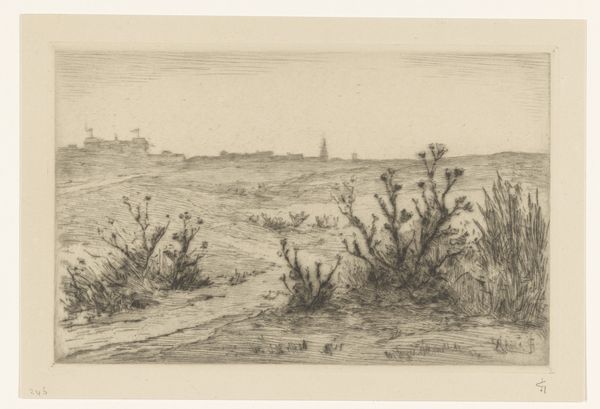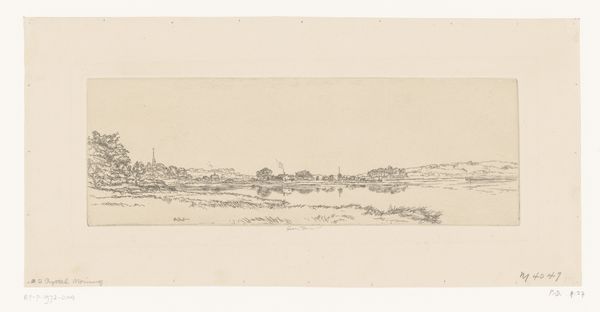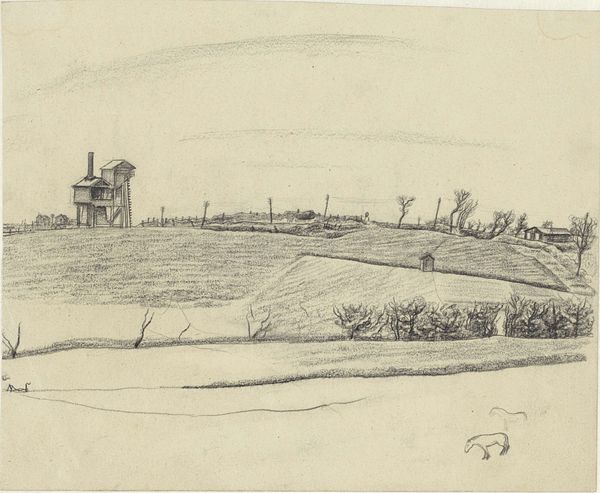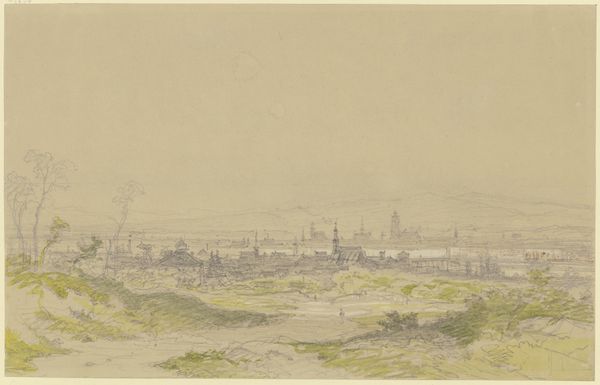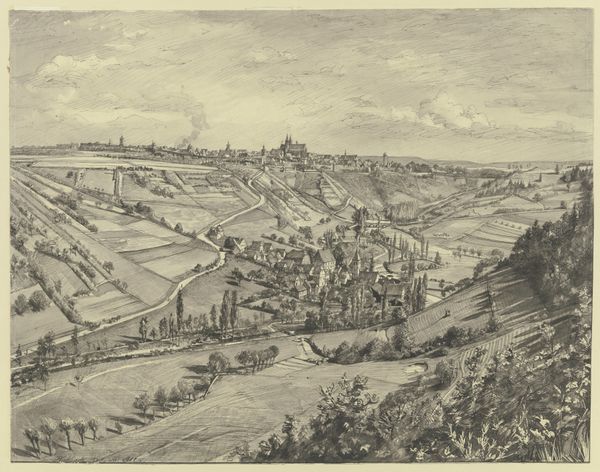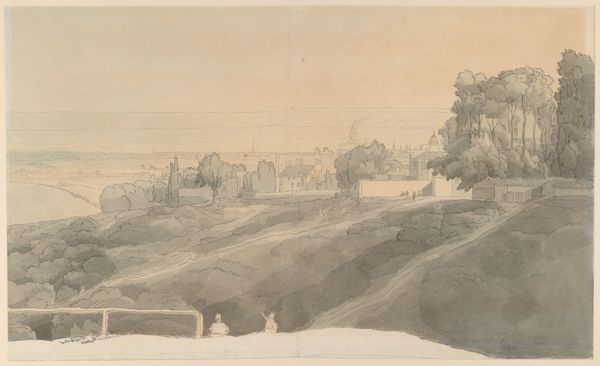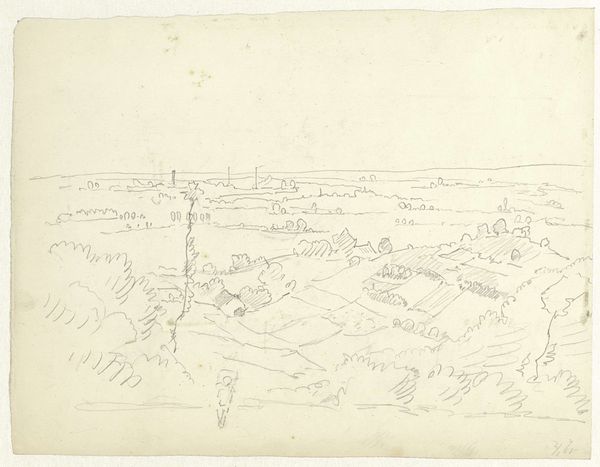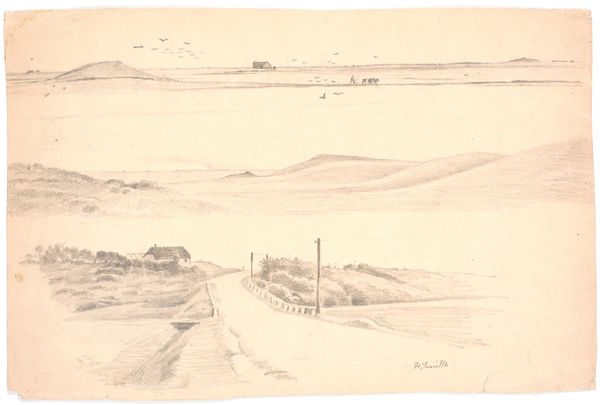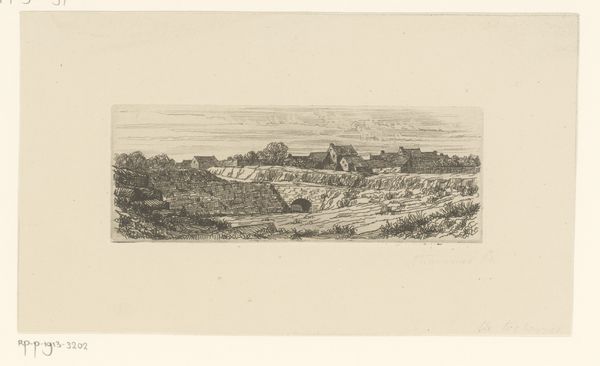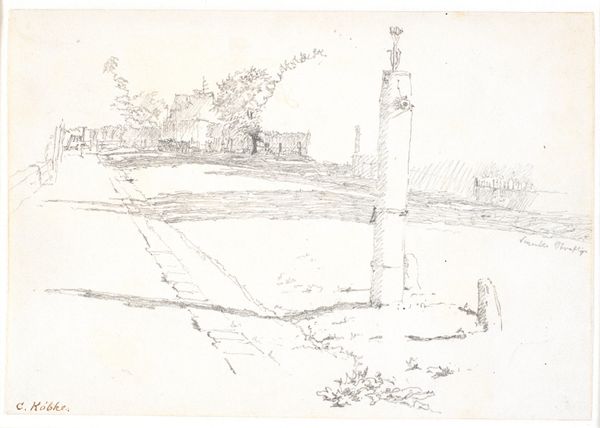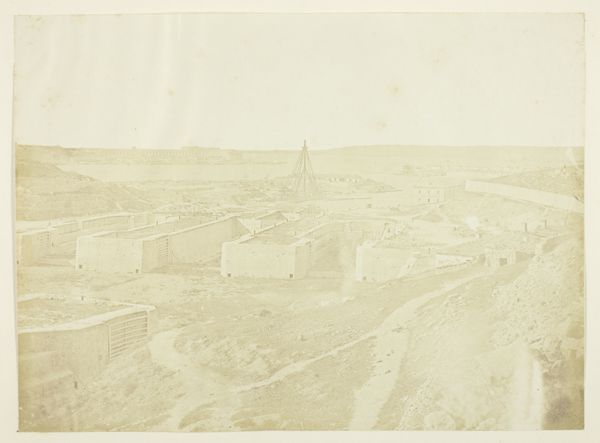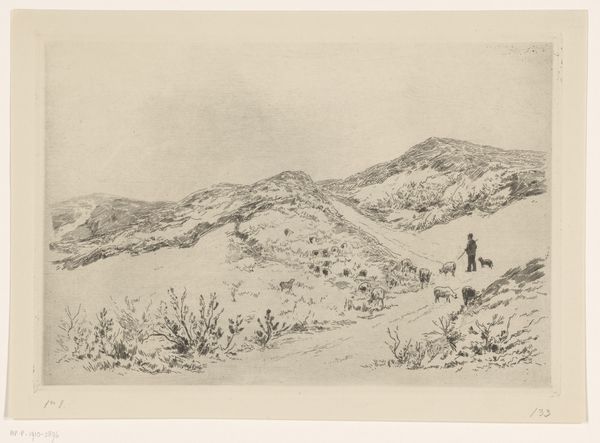
#
pencil drawn
#
light pencil work
#
pen sketch
#
pencil sketch
#
old engraving style
#
personal sketchbook
#
pen-ink sketch
#
pen work
#
sketchbook drawing
#
pencil work
Dimensions: height 320 mm, width 437 mm
Copyright: Rijks Museum: Open Domain
Curator: Welcome. Before us hangs "Landschap met duinen en bebouwing," a pencil drawing created in 1931 by Henk Henriët, currently residing here at the Rijksmuseum. Editor: My immediate reaction is one of quiet desolation. The subdued tones and the rather sparse details evoke a sense of solitude and perhaps the encroachment of human construction on the natural landscape. Curator: Indeed, the composition itself is intriguing. Note how Henriët employs subtle gradations of tone to delineate the undulating dunes, creating depth through a skillful manipulation of light and shadow. Semiotically, we see a very well-constructed landscape. Editor: But what does this constructed landscape tell us about the Netherlands in 1931? This piece captures the relationship between rural communities and modernization; fences demarcate boundaries. Henriët isn't just sketching scenery. There’s a commentary on land use. Curator: It is important to view this drawing, first, as an aesthetic achievement. The precision of line, the economy of detail… it all contributes to a harmonious visual experience, almost reminiscent of older landscape masters through a contemporary lens. Editor: I disagree on 'harmony.' Those stark structures juxtaposed with the natural curve of the dunes feel disruptive. Post WWI, in Europe—this tension speaks to the disquiet of a rapidly changing society still reeling from immense trauma and beginning a global economic depression. Curator: Although the sociopolitical backdrop you've sketched is a compelling theory, there's the undeniable craft Henriët brought to the plain medium. The careful attention paid to linear perspective directs the viewer's eye. It’s a formal achievement regardless of any inferred sociopolitical reading. Editor: But to separate form from content is an artificial division! The very choice of a landscape –especially during a period of immense social upheaval –and its stark depiction are conscious choices, laden with meaning. This isn't mere aesthetic exercise. It reflects a society grappling with its identity. Curator: A landscape that invites contemplation on line and shape, if one so chooses. Editor: And one that also serves as a poignant reflection of an era and society.
Comments
No comments
Be the first to comment and join the conversation on the ultimate creative platform.

